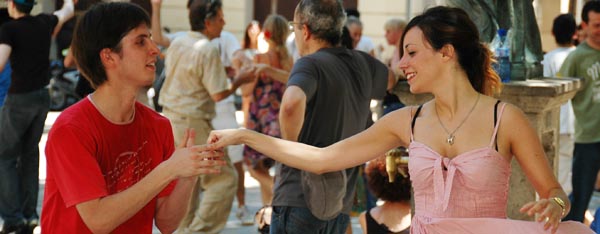
We have to get off this planet. The last terrestrial extinction event occurred only 66 million years ago with an asteroid strike on the Yucatan Peninsula. It wiped out three-quarters of the plant and animal species on planet Earth. Only the naive believe this will never happen again.
Elon Musk has the right idea. His strategy for space migration to the planet Mars will make humanity a dual planetary species improving the odds on our survival for a while to come.
This is commendable risk management in action. It’s necessary but not sufficient. It ignores the reality that Andromeda (our nearest galaxy) is headed our way. Within 4.5 billion years it will collide with the Milky Way (our home galaxy). Don’t worry, no one will be around for the experience. Within 3.75 billion years the surface of the Earth will have already become far too hot for liquid water to exist, ending all terrestrial life.
Ergo, forget about exiting planet earth, we need to vacate the galaxy.
Don’t laugh. We need to develop a sense of urgency about this because engineering the systems required for intergalactic travel will take that long. Let’s start thinking about vehicles that can house autonomous human communities for multiple generations in intergalactic space.
It’s an interesting thought experiment. The problems are scientific, engineering and human. A while back I visited my daughter Julianne in Barcelona. My trip set me to systems thinking.
Will They Remember Us?
Most civilizations plan on eternal life but somehow it never pans out that way. We prove it every time we uncover a Pompeii or a new Atlantis and dig through the entrails of a lost world listening for the cries of the dead. Its disappointing because, you know, it’s going to happen to us. Worse, more likely than not, our history will die with us leaving nothing of this great civilization behind. If the end game of global warming or nuclear war left us without electricity the servers would power down and come to dust, the Internet, singularity of all our wisdom – an abstraction at best, of no real substance whatsoever – will cease to exist leaving nothing to speak to the historians, millennia hence. No Rosetta stone, no glyphs, no dead sea scrolls, just feckless sensors ploughed into the surface of magnetized disks or the skeletal remains of quantum memory sticks, once pocket-sized oracles, containers of the known works of man, powered down and useless among the detritus on some lonely desert plain.
Have we made a huge mistake using technology to document technology? Have we used too much active storage leaving nothing that could be recovered 2,000 years from now with a spade and a brush?
Should our history ever power down, who will know our nature? Were we peaceful or warlike, compassionate or ruthless, intellectual or earthy, good or evil, prosperous or poor? This could happen, the evidence is strong. Every day thousands of us lose a day’s, a week’s, a year’s work with the errant strike of a delete key or a head crash in a geriatric hard drive that should have been retired a year ago.
My question is: if this did happen on an apocalyptic scale, destroying all record of our science, technology, literature and art, would it matter and if it did what should we do to preserve our history? In Barcelona to visit my eldest daughter Julianne I heard a story that set me thinking.
Catalunya
I am leaving Barcelona. Waiting in line at coordinate G2 on a sun-bleached Catalan tarmac. Easyjet.com, Spanair, Ryan Air and us: Iberia Flt 6775 en-route to Madrid, home of those Castilian bastards who, in 1469, sent an army up here to take over and still think Catalunya is part of Spain.
Catalan history is a long story and a good story. Catalonian territory was first settled in the Middle Palaeolithic period (300,000 to 30,000 years ago). It was colonized by the Ancient Greeks and the Carthaginians who ultimately clashed with the Romans, who moved in around 200 BC with the express purpose of establishing a base to attack Carthage (today’s Tunis). The Saracens came and then the Visigoths. Finally in AD 801 Wilfred the Hairy allied with the Emperor Charlemagne’s son, Louis the Pious, to throw the Saracens out of Barcelona and create the independent state of Catalunya.
The Catalonians love their land. They are possessing of and possessed. It is in their poetry, songs and dances; around every corner and in every town square, written in the simple steps passed from one generation to the next, eternal and unconquerable. Their Catalan dialect says a lot with little. A sixteenth century poet monk expressed it with a simple quatrain:
L’Emigrant
Dolça Catalunya, (sweet Catalunya)
patria del meu cor, (homeland of my heart)
quan de tu s’allunya, (to be far from you)
d’enyorança es mor. (is to die of longing)
Jacint Verdaguer
The ancient Catalonians were merchants and seafarers. Barcelona built the largest war ships in the Mediterranean. Galleys crewed by six hundred slaves, twelve to a oar, fought the Turks freeing up trade routes and preventing the Mediterranean from becoming an Ottoman lake. In modern times Catalunya claims Antoni Gaudi, Pablo Picasso, Joan Miró and Salvador Dalí as its native sons and channels its natural aggression into sport. FC Barcelona is more than a football club, it is a symbol of Catalan culture. Its titanic battles with Real Madrid (referred to as El Clásico) relive ancient conflicts with canon fire echoing through the city on each Barcelona goal.
Feeding
Now our turn but one; ahead the Ryan Air jet rotates into a hazy blue sky revealing its silver line of hull as it lifts, tilts upward and executes a lazy left turn. Our engines throttle up and I feel the familiar thrust as we accelerate to takeoff. I wonder how much longer this can last. How much longer can humanity afford to feed kerosene to these engines so I can make a snap decision to visit Julianne in Barcelona and fly half way around the world in thirty hours?
It’s true that everything both organic and man made needs sustenance. The Castilians fed on the Incas. I feed on large corporations that need systems engineers. Contractors feed off me and, in Barcelona, the pickpockets feed off everyone. They’re a feature of the city more numerous than the pigeons in the Plaça Catalunya but less prone to violence than the vultures that nest in the mountains of Pyrenees to the north. Most visitors to Barcelona will make their acquaintance, singly or in gangs, at the tourist haunts where crowds gather to watch the jugglers and mime artists.
Julianne’s first contact occurred while sitting on a ledge near the Plaça Catalunya. A man sat beside her gesturing at a map and asking directions in the rapid Catalan klacak-al-ack. She felt her bag slipping away and quickly turned to face the second member of the gang, her bag in hand, frozen in space by eye contact. Jule is a gentle soul who often finds it necessary to state the obvious. “You’re too slow man,” she said. “I’m sorry,” he said, and gave it back to her.
Strike One
My last day in Barcelona was full of adventure. I toured Antoni Gaudi’s unique apartment building La Pedrera and met up with Jule to visit the Parc De La Ciutadella where everyone goes to practice what they do. Jugglers, tightrope walkers and tap dancers warming up in the rotunda for the salsa dancers that come out after dark. We walked to the Plaça Catalunya through the narrow streets of the old town. They were mostly deserted save for a few small children playing at the intersections. Balconies with shuttered windows and wrought iron balustrades arced above our heads, scenes layered with 2,000 years of civilization demanding to be photographed. In between shots I held my camera by the zoom lens in my right hand, the strap dangling down.
It was like a marlin strike. A violent tug on the strap from behind. I instinctively clamped down on the lens casing, let out a primal yell and swung around to see a teenager in a blue tea shirt and new sneakers retreating back down the street. He stopped at the corner to observe. Our gazes locked. It seemed like he was inviting me to chase him. Maybe to meet his friends further down the lane. I declined. After all I still had the camera with the 1,300 shots of Barcelona. I also had the sense that I was not a victim of an attempted robbery, just joined in a game with a naughty boy who should have been playing with a ball and a stick.
We moved on and met Jule’s friend Clare and her baby son Eloy at the Plaça Catalunya. Fully sensitised I became aware of the space around me and tucked everything in. Nothing dangling down. It turned out that Clare had had a similar experience with a mobile phone. The phone strap had been dangling from her jeans; bait for the piscine pickpocket.
Strike Two
There was a gay pride march from the Plaça Catalunya to the Plaça Espanya. We joined the throng, falling in behind a double-decker bus. It was cut off at the top and populated with dancing gays hurling condoms at the crowd below against a background of pumping rave music.
There was a festival at Espanya. We stayed till dusk watching the drag queens posing by the magic fountains. Finally we headed back into town for dinner. The Espanya metro station was crowded as you would expect so I was not alarmed at being jostled as I stepped onto the train. Being aware of the space around you isn’t much help when it’s full of people leaning in, but when I felt the brush of a woman’s hand swathed in silk I put my hands over my pockets just in case. The crowd seemed to fall away as I passed through the sliding doors.
Clare had boarded the train ahead of me and was seated watching. She yelled to check my pockets. “That was a tactic,” she said. “A gang of five surrounded you while you were boarding then fell back onto the platform before the doors closed. Two girls and three boys.” Barcelona had touched me again. It was developing a distinct rhythm worthy of the grace and manners of a seventeenth century minuet: step forward one two, reach down, gesture at pocket, remove wallet, step back one two, bow, “Thankyou sir,” doors close, change mark; but with no profit, nothing was missing. I saw no faces, just felt the presence of the anonymous hand. It must have been a wonderfully delicate thing, just as soon gliding across a piano keyboard as caressing the lining of my jeans.
The Gypsy Woman
In the cafe of the Organic Market we debriefed my successes at amateur crime fighting, then Clare told us the story of her two friends who had not been so lucky.
Carmen and José had come to visit Clare from Mexico City. Soon after their arrival José’s bag was snatched in the Plaça Catalunya. In the bag was a laptop computer and on the computer was the only copy of his PHD thesis. Five years of detailed scientific reasoning gone, José took to his bed in hysterics.
A gypsy woman raised on the streets of the city in the lake of the moon, Carmen did not see finality in this, just a temporary setback. The next day she returned to the Plaça Catalunya, sat on a bench and waited. She returned the following day and the next until the gang reappeared. She waited until they marked a tourist then walked up to the pickpocket with the stolen wallet and pushed him to the ground. It was a calculated move. She was soon surrounded by the rest of the gang. But there was hesitation. Some primal disposition, even amongst thieves, to be polite to ladies. The scene was almost comic. The Artful Dodger and Fagan’s gang in a standoff with a feisty, frizzy haired, five foot nothing Mexican chick.
Carmen grasped the moment. “Now you listen to me,” she said, “We come from a poor country and most of what we have was on that laptop. I beg you. I plead with you. We will give you everything we have left if you will just return it to us.”
Silence. The blue bus left for the airport, the occupy protesters chattered in their tree house, someone returned a bicycle to the rank across the road. Eyeball to eyeball with its underworld Carmen prodded the conscience of Barcelona and waited for goodness.
A New York crack head would have pulled the trigger and taken the twenty bucks, a Changhai triad might have cautioned you with a non lethal knife slash and melted away, but the Barcelona pickpockets paused. There was a moment of reflection and maybe even empathy. The Catalan memory of oppression: the murderer Franco and his fellow traveller Hitler, Castilian bastards and Saracens devoid of mercy. Then one of them came forward, wrote down a telephone number and handed it to her. “Call this number,” he said, and they were gone.
The next day she called and got a deep male voice. “Meet me on La Rambler by the Boqueria entrance,” it said. “You’ll be watched. Any sign of police and you will never see us again.”
La Rambla is a wide and inviting promenade that stretches from the Placa Cataluna to the Port of Barcelona. La Boqueria is a frenetic produce market where anything edible that walks, crawls slithers or grows from the Catalan earth is on sale. The entrance draws you in with a promise of fresh fruit and vegetables but as you go deeper past the sleeping dogs, forests of hanging leg ham and the stiff fish you find the true guts of Barcelona where bull’s testicles can be had for two Euros a piece.
The following day Carmen waited in the crowd at the entrance. Then he was next to her. He towered over her with his dark unsmiling features and black hair slicked back. His powerful presence made her feel small and naked under her clothes. He was relaxed and matter-of-fact but at the same time very aware. No obvious circumspection though, no furtive glances. The way had been well prepared. She’d felt the eyes on her for the past thirty minutes, since she first entered La Rambla. He was at home. There was no law here.
“Come,” he said and strode into the market. She watched him for a second and, making a snap decision, naked or no, hurried after him.
The rear exit of La Boqueria teases out into a network of narrow lanes that forms Barcelona’s infamous neighbourhood: El Raval, home to a multicultural population of 50,000. El Raval became famous as Barcelona’s den of thieves. Immigrants from the Spanish regions of Aragon, Galicia and Andalusia and later from North Africa were drawn there by the promise of work in the 1950s and 60s. The desperation of poverty soon led to drug dealing and street crime. The Catalans blamed it on the xarnegos (dirty wog foreigners). The tourist guides say it’s safe there now but any Catalan will tell you not to go there without a local who knows the score.
Silent and setting a cracking pace the man plunged into El Raval with Carmen walk-running behind. The light dimmed as the lanes narrowed and the balconies leaned further in from above. Men stood in doorways smoking cigarettes and giving her their frank male once-overs as she hurried by. What was behind those doors? She imagined cavernous dungeons, subterranean pathways and revolvers on beside tables. Her anxiety grew as the depth of their penetration left her lost amongst strangers. He stopped and banged on a heavy door. She could hear several bolts being drawn. “Wait here,” he said and disappeared inside.
The door opened directly onto the street, there was nowhere to sit, nowhere to hide. She stood exposed, self conscious, heart pumping, unsure what to do with her hands. The exertion of running had soaked her wild silk blouse, it clung to her body. Then the eyes were on her again. She looked up. Two scantily clad women leaned on a balcony rail. For a moment the one in the black petticoat let her gaze brush over Carmen with an attitude of appraisal.
The mind plays cruel tricks. Was black petticoat a madam seeking new blood for her house or just a mistress, fresh from the arms of her lover and thinking about dinner? Carmen’s thoughts delivered her a perfect image of Mariano Fortuny’s Odalisque, the painting she’d admired in the Museu Nacional D’art De Catalunya that same week. Was this her fate? A simple data recovery mission gone badly wrong – the life of a respected academic broken down into violence and sexual submission to some hairy Berber in a remote Moroccan harem?
Muffled angry voices issued from within the apartment. The man burst through the door and onto the street one hand behind his back and in a bad temper. He came up to her and stood close. So this is how it ends, she thought, lamenting the gentrification of academia that had left her without a knife. Unarmed she made her fiercest street face and blurted, “You can’t have me. Never!”
He dismissed her with a look of annoyance, “You think we’re evil,” he said, locking her in place with black eyes. Pausing to still his anger he looked over her head, down the street, over the cobblestones, past the shuttered windows and back a millennia in time maybe to the sight of twelve galley slaves humping their oar down to the port, a thousand yard stare mingled with a look of tragedy.
“It’s necessary to eat,” he said to no one in particular. “Morality is a luxury. It can come later.”
With an act of will she watched him haul his mind back to the present and look down on her once again.
“I am a professor of history, emeritus, unemployed, fired. The past holds no meaning for them. But I hope you will remember us with some kindness.”
From behind his back he produced the silver case. A faint smile flickered across his face.
“Here,” he said, “Give this to your man of the books. Tell him to keep on.”
She took it as he moved by her, turned on the corner by the store and dissolved into the maw of El Raval.
Unburdened of fear and the weight of the balcony watchers, gripping the silver case with white knuckled glee, in clear air and sunshine, Carmen found her way back to La Rambla. Life had begun again. Five years of scientific history back in play. She thought of José, restless in the night, bound in their twisted sheets. How will I bring it to him she mused. I will wear the red dress. Yes.
Endurance
My flight navigates to cruising altitude. We briefly track north along the Costa Brava. I look down on the shoreline of rugged cliffs and wonder how many galleys were wrecked here in search of safe harbor. Does it matter? What profits us to know of these things? Will the death of history be a loss? Napoleon was contemptuous. “History is a fable – agreed upon,” he said.
We execute a left turn over the ancient walled city of Gerona and track south west for Madrid. I look for the ramparts and alleyways Jule and I had explored late at night two days before.
We land at Madrid-Barajas Airport and I trail through the usual melee looking for my Dubai connection. I come upon a large back-lit photograph of several figures perfectly composed. It’s stunning, a visual that stops time, as though it came from eternity and will live there always. I put down my bag and take it in. This is what draws me to these classic cities. Random art placed on the track of normal life. At Charles De Gaulle Airport a sculpture occupies a seat in a departure lounge, a circus clown mosaic sprawls across a wall in the New York city subway and this – unexpected and wonderful. I unpack my Nikon for one last photograph.
Twenty-five hours on I arrive at my front door in Brisbane, Australia and rummage for my door key in its hiding place among the golden canes. It’s 10.00 am, too early for sleep if I want to beat the jet lag so I unpack the miniature poster art I’d brought at the Museu Nacional D’art and upload 2,000 shots of Catalunya to my desktop for review on the big screen.
I am pleased with my catch: the alleyways of Barcelona’s old town, the architectural genius of Sagrada Família, the monastery at Montserrat with cameos by Jule, Clare and Eloy, Gerona and the art of Salvador Dali in his museum at Figueres – and then, the very last shot, the intriguing photo art of Madrid-Barajas. There is something strangely familiar about it. The overall composition, the contented dog at rest in the foreground, the artisan with the camera to the left, the mirror in the background and the figure pausing on the stairs in the rear. I glance at the poster art strewn across my desk. One piece in particular catches my attention: Las Meninas (Spanish for The Maids of Honour), a 1656 painting by Diego Velázquez, the leading artist of the Spanish Golden Age.
Amazing! In transit through Madrid-Barajas I had stumbled upon a modern tribute to Las Meninas, the same composition, the same mood, but in the modern context. Digging deeper I learn that Las Meninas has been one of the most widely analysed works in Western art. It has been hailed as representing the “theology of painting” and Velázquez’s supreme achievement. The unknown Spanish photographer was not his only admirer. Pablo Picasso did a series of fifty-eight paintings interpreting the work in his own style.
I gaze at the modern Las Meninas and wonder if my predicting the death of history was a little rash. If Las Meninas is any indication history can be relentless, layer upon layer it pursues us, and its objects of value find a way to endure.
But what of human wisdom? How will it persist when the only characters we carve into stone today spell out the names of the dead and their eulogies? There must be a strategy because the Frenchman was wrong. True history is no fable, it’s precious because it cannot lie. Its lessons carry eternal truths. If history dies so does wisdom. How to preserve it then? I’m pessimistic about computer technology. You could say, “Look out! With the shutdown of this Internet server Carmen’s story and its moral will be lost.” But it’s a mistake to think we can codify morality on a hard drive. The things that matter, what’s real in our lives, are more organic than that.
Keeping On
The holiday is over and work begins again. I’m back at my desk dealing with systems engineering issues. It’s been quite a mission, hauling my thoughts back to the present up through the layers of Catalan history. To make things worse, since Barcelona, I’ve had this nagging feeling of being short changed. Picasso had Velázquez’s genius to interpret, guide and nurture him. Las Meninas gave him “the theology of art” on a platter. Artists aren’t alone, modern philosophers can also draw from a body of work stretching back past Aristotle, Plato and Socrates to Pythagoras. But what about us? What wellspring of inspiration do systems engineers draw from? Where are the great and the good to throw their shadows across our profession? Where are the great works to be admired and emulated? Where are our theologies, our grand unified theories (GUTs)?
Our short history has thrown up some excellent candidates but we don’t celebrate them, just take a fragment of what they’ve done and move on. What young engineer can tell you who wrote the Apollo Guidance Computer’s real-time operating system, the software that landed the first men on the moon and became the foundation of modern fly-by-wire systems? Whoever heard of Jack Garman, a twenty-something NASA engineer who literally stood behind the curtain at Houston Mission Control and, off the top of his head (some say from a cheat sheet under his blotter), told Neil Armstrong to ignore Apollo Flight Computer error 1202 and continue with the lunar landing?
No, it’s not yet in our nature to celebrate the past but I wouldn’t self flagellate over it. In fact I’m over the constant negative self-talk we practice, reliving software failures. The fact is we’ve come a long long way in a very short time. We just have to appreciate that in the context of other disciplines we have not yet reached teenage. We are child barnstormers, the sort of people you need to kick off something brand-new.
I have some affinity with Jack Garman. Thirty years ago I was manually loading assembler language programs into a computer controlling a very large chemical processing reactor. We couldn’t afford a test machine so we tested our control algorithms live. I can still remember the fear of getting it wrong but somehow I never did. I had mentors who trained me well and I mentored others. We got away with these grossly unsafe practices because management never did understand what we were doing. Not so today, creeping maturity has drawn a line under that kind of behaviour.
Does Systems Engineering Have GUTs?
Professional maturity manifests in many ways. One encouraging sign for systems engineering is the current dialogue over grand unified theories. The theologians have arrived and are hard at work.
Shirley Gregor1 describes three characteristics of theories:
- They attempt to generalise local observations into more abstract and universal knowledge (example: to deal effectively with massive complexity you must look for the outline of big things)
- They represent cause and effect (example: incorrect and incomplete requirements specifications result in high defect densities in delivered software)
- They aim to explain or predict a phenomenon (example: the behaviour of a system emerges from the interaction of its parts and cannot be predicted by examining components in isolation).
So do we have any GUTs? Do we have a way of explaining the essence of this discipline to students? To impart a deep understanding of professional insights and judgements we need thought processes and vocabularies rich with systems engineering wisdom.
Ivar Jacobson, et al2 suggest: formal systems theory, decision theory, organisation theory and theory of cognition. Gems of wisdom and scenarios of cause and effect offered are: Alan Davis’s 201 Principles of Software Development3, Fred Brooks’ The Mythical Man Month4, and various bodies of knowledge (e.g. the SWEBOK5). They are all on the table but which one of these is an object of value with a way to endure?
Stay with me while I apply the Las Meninas test. If we transported ourselves 2,000 years into the future and looked back, which one of these might be credited with saving the human race. In extremis I’m leaning toward “systems thinking”.
Just imagine …
Light Speed
José relaxed at his control pulpit by the observation portal of the light drive chamber. Tucked into a forward lobe of the star ship SV Barcelona, his station offered the most spectacular view on the ship. It was sought after but exclusive. Two troopers stood at the entrance hatch with orders to kill anyone approaching without the coded implant of a Svelte.
It was the eve of a special day, one of only two possible in the life of a Starfleet officer – the return to Earth from a fifty year space mission. The captain had auspicious news. Their arrival would coincide with a solar eclipse where, from the aspect of their docking bay, the Earth would move across the face of the sun. They’d have a grandstand seat all the way in and arrive at the moment of total symmetry. It was a good omen, one to move even the most stoic of space troopers.
Despite their standing as the crème de la crème of society’s intelligentsia, star ship crews were a superstitious lot. A life in space connected you minute on minute to the fundamentals of human life relegating values to the archaic, some said to the upper Palaeolithic, an attitude so well described in the literature:
… the fertility of the soil, the magic of animals, the power-vision of solitude, the terrifying initiation and rebirth, the love and ecstasy of the dance, the common work of the tribe.
Gary Snyder
And tribal they were, each member assigned well defined “common work” in the operation of man’s most complex and sophisticated machine.
The Sveltes
José was one of five Sveltes aboard the Barcelona. His role was to manage the star ship’s propulsion systems. Sveltes were the most highly educated of crew members. A fully qualified Svelte was a product of prenatal genetic profiling followed by thirty years of training commencing shortly after birth. Their charges, the light drives, were massively complex engines that drove star ships through space at many times the speed of light allowing man to routinely fulfil his dream of intragalactic travel.
José had been busy for the past three months reconfiguring the light drives for deceleration through several layers of light speed toward a relative docking velocity of zero at Space Station Alpha in Earth orbit. The approach deceleration phase was the best time of a mission. The Barcelona strapped on like a giant exoskeleton, the Svelte’s mind an organic component of the massively complex light drive control systems, multi layered in their hierarchy, each level with its own function, constraints and rules of interaction, executing the orders of its parent and passing back the status information needed for higher order control tasks. And at the highest order, godlike, was the reasoning of one man, José.
There was no other profession like this, all agreed that the role of a Svelte was more than a job, it was a calling. The smarter-than-human computer often termed “the singularity” had failed to materialise in millennia of scientific advancement. If it had the sages of Starfleet Command would probably have legislated it out of existence. Man hung on to control of his own destiny, continuing to make the big decisions. Admittedly, with the passing of each century, of necessity, more tasks were delegated to machines moving human reasoning higher up in the hierarchy of man’s ever expanding complex systems – but never to the point where man lost visibility and control. Everyone knew it, that way lay slavery.
And so it was for the propulsion systems of a star ship. Mentally strapped into the light drives’ neurone controllers, José felt the flow of dark energy over its surfaces as though it were his own skin. Through the crosshairs of the asteroid canon he watched the blasters do their work, sensing the minute turbulence from the eddies of sub-atomic particles left in their wake. Thrusters were extensions of his hands and his mind an essential human spark in the formidable transportation system that was the SV Barcelona.
Three hundred meters removed and four decks down on the ship’s bridge the captain was well aware of his progress. Her personal monitor was capable of drilling down into all facets of the ship’s operations. She could even read his thoughts if he hadn’t muted his cogno-transmitter, but, as was the custom, he was obligated to report his status on an archaic voice line and get an acknowledgement.
He flipped a switch and spoke, “Captain, drives secured for sub-light speed, over.”
“Captain. Acknowledged. Out,” came a crisp reply.
She was about to become a very busy lady, navigating the multi-million tonne Barcelona with its precious cargo of minerals from hyper space to a dead stop and an intergalactic anticlimax, punctuated by the dull click and the subtle hiss of an air lock at a space station docking pod. In contrast José’s job was pretty much done, the bridge was in total control, leaving him to monitor light drive operations and be available to deal with exceptions.
In the Loop
He loved it that humans were still in the loop even though unmanned space vehicles had been technically possible for centuries. Initially Starfleet Command went down that path sending robots into space. But all the complex missions failed due to a misguided belief in a rationally ordered universe; that space could be reduced to a mathematical algorithm and conquered with numbers by machines with linear styles, with no need for ingenuity or flair, no place for guesswork or surprise, no chance for discovery and no need for a human being. Harsh experience ultimately taught Starfleet Command that machines deal well with events and objects that appear in an ordered relationship with one another, something that can be modelled, but a human mind is needed to deal with the random tangents thrown up by real life. A deep space mission gone wrong could be saved by human decision-making on limited information tempered by the maturity to avoid recklessness.
Ultimately Starfleet Command made a policy decision that, to advance the science and engineering of interstellar travel, man must “get the feel of the galaxy” and accompany his machines into space, with the caveat that the massive intelligence of these vehicles would not be permitted to dumb down their operators. The creeping slavery of automation would be held at bay, star ship crews would be highly educated, totally familiar with the fundamental science of all systems aboard, capable of rebuilding, reconfiguring and upgrading any system and, most important of all, have the creative drive and scientific wherewithal to synthesise new inventions – create solutions to problems not previously encountered in interstellar space.
This was a practical necessity, Starfleet officers did not have the luxuries of terrestrial scramjet jockeys on their trivial three-hour Sydney – London sectors. A propulsion system anomaly could not be simply handed off to engineering on landing and soon forgotten in the warmth and society of a post flight cocktail party. For a working Svelte in some outer spiral of the galaxy, ten thousand light years from Earth the problem was yours – all yours.
Captain My Captain
José neuro-gestured his cogno-transmitter to mute. Alone with his thoughts he took in the view through the portal. The Barcelona had entered Earth’s solar system and the show was about to begin. Without the immediate diversion of work it was hard not to be emotional. Homecoming from a fifty year adventure and out through the portal, blue haloed Earth, home of his heart, a glittering sapphire in the lake of the sun.
The blue planet was unique in the galaxy, no equivalent had ever been found. Forty years into the current mission it had also become a shrine. José’s mother Carme had died. He looked forward to laying a flower, picked from the natural earth, at her grave, in a field, by a river, in Catalunya.
Beating back tears with a well practised thought control routine, he selected the bridge video feed for his personal monitor. Considering the enormity of the task at hand the mood was amazingly calm across all the control consoles. Captain Velázquez was having one of her characteristically empathetic conversations with the first officer over a minor issue of navigation. He loved the sound her voice as did the whole crew. But for him it was different.
Captain my captain, he thought, audacious in commanding, faithful in loving, my lover, my partner, my wife. They’d been together for 50 years – a golden couple. Female ship’s gossip had it that he’d loved her even before they’d met. She was beautiful, clever (she’d topped her class in astrophysics), and the name had sealed it. Carmen.
Engineering Love
Common sense is a valuable commodity. It can take centuries to discover, value and put into practice. There is a Catalan word for it:
seny – an instinctive and reliable sense of order, refusal to go whoring after novelty, natural wisdom
After losing many lives and much treasure, Starfleet Command found seny, mandating that its star ships be crewed by couples with stable relationships. A crew member, on duty, distracted by the pain of a lover’s rejection – anger, jealousy, loneliness, frustration – was a threat to the ship. What minimal recovery of black box thought recorders that was possible from the subatomic debris of the first failed deep space missions had proved this conclusively.
The post mortems were horrific and not for the faint hearted. Walled in by the finite chambers of a space vehicle, human conflict could became explosive. The thought streams trapped by the recorders chronicled the banality of every day living, then inevitably some anomalous interaction between crew members, minor at first, would spiral out of control. Social contagion moved vices stealthily between those nearest. A love affair turned toxic, a minor technical disagreement evolving into a full blown feud. The final seconds where the worst. No investigator ever got used to it. A stream of consciousness spiralling down into the sewer of the worst we can be. Anger, hate, envy, jealousy, avarice – souls in agony. Then a missed way point, an asteroid alarm ignored, then silence. Four thousand thought streams terminated in a nanosecond. A seemingly minute breakdown of the social order spelling the violent end of a mission. At least it was always quick.
As the duration of space missions increased from months to years to decades, disaster causal analysis reports took on a familiar litany. It didn’t matter that the person responsible had intelligence at genius level and, on paper, was the optimum candidate for the job, what killed them all was a human failure to integrate with on-board society. Put plainly, to get along with people. The so-called optimum candidate turned out to be suboptimal when considered in the context of the star ship system as a whole.
The common conclusion was that four thousand lives might have been saved if a less brilliant person with better social skills where put in the job.
In response Starfleet Command applied, down the human dimension, the same all pervasive systems thinking that was ploughed into the design of space vehicles. To attract the right people star ship missions had to offer a life, and a highly stimulating one at that. Harmonious human society was an essential characteristic of the star ship system and the foundation of that harmony was the happy couple with the vows of commitment formally recognised in a Starfleet marriage contract.
Who would have thought? Once characterised as “science without soul” by educators in the humanities, systems theory became a natural branch of philosophy contributing to a unified theory of love. Is not marriage a system like any other, with harmony an emergent property? Examining one partner tells you nothing, you must have visibility of both – over time, observing the quality of their interaction over dinner and, most importantly, in situations of extreme stress. The Starfleet boffins didn’t have to look far for a specification.
Let me not to the marriage of true minds
Admit impediments. Love is not love
Which alters when it alteration finds,
Or bends with the remover to remove:
William Shakespeare, Sonnet 116
Without interaction there can be no enduring love (especially if the partners are physically light years apart) and no marriage system. Without love there is longing and lack of focus, a deadly state for the helmsman of a star ship. But could enduring love be engineered? Could emotional stability be synthesised in a relationship? The poets ran screaming from the room, but Starfleet Command soldiered on. They had no choice as it was clear that man could not explore deep space without a guarantee of social harmony aboard its star ships.
Recruiting policies were revamped. A higher value was placed on social skills, but this created its own problems. It turned out that the pool of brilliant scientists and engineers who happened to be wise, emotionally well balanced and in stable relationships was impossibly shallow. Recruiters dug deeper with the best that modern psychology could offer. They refused to accept that technical brilliance could not routinely coexist with empathy, compassion, wisdom and love. There must be some control that could be exerted on the human condition to synthesize the right kind of behaviour.
Ancient quality management techniques kicked in. If you have a defective component it is probably the product of a bad design and manufacturing process. And so was born the Starfleet human design discipline with a foundation principle of education from birth. But education in what?
Anger
Analysis revealed that a common behavioural link in the event sequence that ended in disaster was the inability to cope with inter personal problems. This gave rise to anger. It snuffed out the lamp of the mind and ultimately extinguished the lives of a star ship’s crew. Aided by some poets and philosophers who, intrigued, had re-entered the room, the analysts clawed their way back to root causes and looked for corrective actions.
One practical solution was training in anger management. It turned out that course materials were readily available, in fact they were five thousand years old, embedded in the philosophy of ancient Athens. The marriage of cross-disciplinary minds had liberated more precious seny. The revelation: philosophy is man’s expression of wisdom and wisdom is man’s last refuge for strength and consolation in times of trouble.
Aboard a star ship troubles were many, all amplified by the isolation of deep space and the impossibility of rescue.
Alone, alone, all, all alone,
Alone on a wide wide sea!
And never a saint took pity on
My soul in agony
Samuel Taylor Coleridge, Rime Of The Ancient Mariner
The agony. Embarked on fifty year missions, in crisis, alone with their meditations, struggling to make sense of the world, to choose a path with nothing in their technical education to show the way, many tormented souls founded, taking their ships and crews with them. The boffins concluded that something more substantial than an anger management course was indicated.
The Whole and the Parts
Man’s knowledge of his world had become dangerously fragmented. The philosophers had carriage of man’s collective wisdom while the technologists forged ahead penetrating deeper into space, racking up first-order engineering victories, while ignoring the second-order effects – the destructive impact of fifty year space missions on the mental state of star ship crews.
Neither discipline had any knowledge or interest in the other – a fatal mistake. Exactly analogous to pulling apart a motorcycle, separately studying the wheels and the engine block, and trying to visualise how the integrated whole should work. In pieces, a motorcycle loses its character and ceases to be a transportation system.
Starfleet Command’s core problem was that it routinely launched space missions with two components flying in tight formation: 1) the space vehicle and 2) is crew. Their mistake was not to recognise these entities as components of a higher order system – a space community and that the “thing” that gave it its most precious property – human survivability – was an outcome of the interactions between and among the crew and its vehicle.
A broader perspective was necessary. Reading philosophy would tell you nothing of light drives. Reading science would tell you nothing of building a harmonious community. Reading both would tell you nothing of the man-machine interactions that would enhance and preserve life (or destroy it if they went squirrelly). What was needed were polymaths, people knowledgeable in a wide range of fields, who could look at the laws of all the disciplines and identify synergies. Then to develop higher order ways of thinking to integrate their fundamental precepts. Then to meet the challenges of the ever increasing largeness and complexity of man made machines. The planners looked back on Leonardo da Vinci and the golden age of Florence and concluded it was time for a resurgence of renaissance man.
The Rise of Renaissance Man
By 3000 AD star ships wielded massive destructive power. To match this down the human dimention their crews required super-human discipline. It simply was not an option to have a delinquent captain vaporizing a planet in a fit of pique.
By 3001 AD Starfleet Command had established a modern School of Athens passing on the teachings of the ancient philosophers: Aristotle, Socrates, Plato, Seneca, Diogenes, Pythagoras, Epicurus, Heraclitus, Plutarch and Marcus Aurelius, a virtual dream team assembled to instruct their charges on how to live, and, more importantly, on how to wield the immense power of a star ship with integrity, honour and wisdom.
The terrible responsibility for four thousand souls in a space vehicle with a maximum range of twenty-five thousand light years could not be borne by any human being without this classical training. A captain was required to not only master the teachings of the philosophical schools but also to transcend them. Transcendence wrought through a daily struggle to overcome oneself and be stronger than oneself.
In her daily struggle, Carmen had a special affinity for Marcus Aurelius. She referred to him as if they were well acquainted. A warrior emperor, he spent much of his reign away from home directing military campaigns against the barbarian tribes on the northern frontiers of the Roman empire. He was one of the good emperors. Trained in the strict doctrine of the Stoic philosophers he dressed plainly and lived simply avoiding all softness and luxury. The most peaceful of warriors his ideal was quiet happiness in home life. Notwithstanding, he was a successful commander-in-chief whose victories were no less due to his own ability than to his wisdom in choice of lieutenants.
Marcus Aurelius set down his innermost thoughts with intimacy and frankness in a journal that became known as the Meditations.
If thou may not continually gather thyself together, namely sometimes do it, at least once a day, the morning or in the evening. In the morning purpose, in the evening discuss the manner what thou hast been this day, in word, work, and thought.
Marcus Aurelius
The calming single focus of his Meditations eased the stress of command, served self-examination and helped with improvement. They were never intended for publication. Carmen imagined his amusement if told that, four thousand years later, a woman in command of star ship would seek guidance from his reflections in her private time, at the start of each day.
XIII. In my father, I observed his meekness; his constancy without wavering in those things, which after a due examination and deliberation, he had determined. How free from all vanity he carried himself in matter of honour and dignity, his laboriousness and assiduity, his readiness to hear any man, that had aught to say tending to any common good: how generally and impartially he would give every man his due; his skill and knowledge …
Meditations of Marcus Aurelius (AD 170 -180)
Somewhere in her private belongings José knew that Carmen kept a journal. He looked forward to reading it some time before he died.
The Women
The integration of the humanities with science and engineering created a monster discipline. Some said more detail than a single soul could master, and then transcend, in a lifetime. The problem was solved by the women.
From the 21st century women had been freed from male domination. For sure, through time, men had revered them as Madonnas, worshipped them as goddesses and waxed lyrical over their unique qualities.
He liked women’s society, and the fineness of their companionship, and their faithfulness and audacity and greatness in loving which … seemed to him … so wholly admirable, so splendid a flower to grow on the crest of human life.
Virginia Woolf, Mrs Dalloway
But when it came to unfettered access to education, doors closed (Virginia Woolf herself was refused access to the library at Cambridge University). Even when the doors were prized open in the latter stages of the 20th century women were socialised out of science and engineering believing they had no aptitude and showing little interest.
This slowly changed as they began to excel in pure mathematics and showed a strange gender specific aptitude for conceptualising large systems. Their natural empathy, communication skills and ability to reduce complex interactions to simple terms made them natural systems engineers, project managers and star ship captains. They seemed to be better risk managers, more alert than men to the consequences of things (possibly something to do with a genetic predisposition for avoiding inappropriate relationships that might bear unwanted children).
The net result was an increase in the intellectual energy bought to bear on all the disciplines by a factor of 1.7. The remaining .3 was applied to the nurturing of children and made education from birth possible.
José earliest memory was the warmth of his mother’s embrace, the rhythm of her heart and the sound of her voice, full of ideas. School was in shortly after birth, with the first seeds sown as a set of foundation thought processes that were later brought into full bloom with formal study. She taught him mindfulness, the power vision of single focus thought and laid the foundations of systems thinking. She did it with love and some urgency sure in the knowledge that this learning would some day save his life.
Her favourite classroom was a field, by a river, near their home. On the bank amongst the wild roses, looking down into the swirls and eddies of the pristine current she’d ask him, “What can we learn from this river José?”
Early Childhood Systems Thinking
In a way all children are born systems thinkers. Fresh in its naive simplicity a child’s mind has a natural proclivity to look for the outline of big things, forming an impression of the whole before engaging with the minutiae of the parts. Only those who could carry this child’s mind into adulthood would be capable of dealing with massive complexity, ignoring detail and seeing only the essential properties of things.
From birth then, the student was ready waiting only for the teacher to appear.
José’s mother was an excellent candidate. She’d been a star ship captain, the product of many years of deep space experience. She understood the big ideas behind super-light travel and knew them well enough to explain them simply. Some said that the conceptual leaps required to understand post Einstein physics were beyond most adults and impossible for a child, but she demurred. Among the wild roses in the field by the river she broke the great leaps down into small steps and slowly advanced José’s foundation thinking. It was a grammar much richer than necessary for normal Earth-bound human discourse but essential to survival in the complex machines that roamed deep space.
He learned rapidly taking his lessons as an act of faith and asking many questions. At age four his thought processes effortlessly conformed to the principles of complex system theory although he had no idea that such rules existed.
As he grew older and more self aware and reticent to be thought of as foolish, his questions became more circumspect. At this, his mother checked him, “José,” she’d say, “In deep space, sufficient evidence is never available to reach an irrefutable conclusion. Those who fail to act for fear of making a fool of themselves can never command a star ship.”
“Ask me a foolish question,” she’d say. “In revealing your thoughts to others you will know more of yourself. Those who are silent in fear of being thought a fool, are fools.”
It was a curious task, raising this man-child, building adult thinking without destroying naivety, instilling courage without instigating recklessness.
José chuckled to himself as the sun loomed larger in the portal. He goosed the gain of the image enhancer and caught his first sight in fifty years of a solar flare. It was one hundred years since he’d first sat with his mother in that field but his memory was clear.
“You can’t be young forever José,” she said. “But you can always be immature.”
Anger Management
In the laboratories of invention and aboard the deep space penetrators, renaissance men and women began to appear. They were as well versed in philosophy, literature and art as the physics of light drives but what distinguished them most from their predecessors was their cross disciplinary agility, their ability to generalise lessons learned in one discipline and apply them to explaining and predicting phenomenon in another. Systems thinking was one of these universal containers of wisdom.
In 3000 AD no light drive tech had ever heard of Seneca, the Roman stoic philosopher. Seneca wrote the book on anger management circa 50 AD. He wrote:
Philosophy moulds and constructs the soul; it orders our life, guides our conduct, shows us what we should do and what we should leave undone.
His thoughts on anger passed into the canon of eternal truth:
There is a moment at the beginning of an emotional episode when we can make a choice – to revenge ourselves on those who have wounded us or to examine our minds, see the beliefs that feed our passions and decide if we want to accept them.
Let us take note of what it is that particularly provokes us. Not all men are wounded in the same place and so you need to know what part of you is weak so you can give it the most protection.
The greatest cure for anger is to wait.
Seneca suggested that excessively optimistic expectations were the root cause of anger, the antidote being to see the world as it is and not throw childish tantrums when it fails to conform to our personal model of what it should be.
By 3100 AD star ship officers were not only intimately familiar with Seneca but also could analyse his philosophy in terms of systems thinking, recognising the synergies.
From a systems perspective anger emerges from a failed attempt at control. The angry bee A interacts with some entity B to achieve some goal, expecting a certain response. When a large gap appears between the expected an actual response from B, anger ensues. The problem lies in the defective model that A holds of B’s behaviour, the model that informs A on how to interact with B to achieve some outcome.
She asks, “Am I too fat darling?”, seeking reassurance that her figure is perfect.
He responds, “You could lose 20 kg sweetheart,” expecting appreciation of his honesty and genuine concern.
She is angry at his lack of sensitivity. He is angry at her failure to respect his integrity. If the goal is maintaining perfect harmony in your relationship with a woman every man with any life experience knows that there is only one answer to that question, “You are perfect for me darling. As always.”
Control and Communication
Projecting the same thinking on to light drive design it becomes clear that the behaviour of the overall system is determined by the interaction of its parts. For those interactions to serve the fundamental goals of the system they must occur in the context of a set of rules. These rules emerge from the models we create of system behaviour. They must be defined communicated and compliance monitored. If expected and actual results differ, there is probably something wrong with the model.
As the complexity of a system increases its functions must be broken up into hierarchies of control. Without decomposition it is impossible for human beings to understand the operation of a complex machine. At each level of the hierarchy there must be rules of interaction. The interaction must be monitored and controlled from the next layer up. Each layer imposes operational goals on the layer below. As complexity increases the systems thinker must engage with these details as the layers deepen in the hierarchy – but at the same time never lose sight of the required behaviour of the system as a whole.
The River Parable
José watched the solar flares boil up and arc over, throwing the rivers of plasma on the surface of the sun into dark relief. He remembered the river of his childhood and its seminal role in his mother’s teachings.
In the beginning Carme had a problem. If all learning involves transfer from previous experience how do you teach a child who has none? A student of Aristotle she found the answer in his Poetics.
Aristotle referred to an interesting phenomenon in human beings. We are all imprinted from birth with the ability to make sense of the world through stories. All human myths and legends are variations of the same story pattern. It repeats in our dreams where symbolic expression is given to the unconscious desires, fears, and tensions that underlie our actions. Stories provide a mechanism to interpret life and can be applied to developing and predicting human behaviour.
Carme set out to humanize science by teaching José the foundation plot of systems thinking, leaving the mathematical details till later. She started with the outline of a big thing.
Gesturing at the sparkling water she’d ask, “What can we learn from this river José?” Then she’d tell him the story.
There was a time when no men or women lived on this land but even so it was a place full of life. The spirit of the river was mother to the tortoises and the fish. The flamingos came to the bank to drink. Lynx, brown bears and wolves roamed the meadows and ranged into the hills. When the rain came the wildflowers grew and sweetened the wind with their scent. The hills, the meadows, the flowers, the river and all living things were the land and the land was in them just as you are part of our family.
Then came a man and a woman. They built a shelter by the river, planted corn and raised a family. They lived in harmony with the land and took only what they needed. As the seasons passed they prospered and learned to love the land that gave them life just as a son loves his mother. But as with a family they had no thought to dominate or own the land, only to be part of it.
As the years passed more people came. The shelter by the river became a settlement, then a small town, then a great city. Men built ships and sailed to faraway lands, trading goods and creating wealth. Machines were built to till the earth and take fish from the river. Factories were built with more machines to make goods for trade. Much of the population no longer hunted in the meadows or fished in the streams and they forgot about the land that gave them life. Instead they sat at desks and spent their days thinking about doing less and earning more.
Then one year the fish in the river died from the pollution dumped from the factories. The people of the city could not drink the water and the children could not swim. Life in the city became unbearable as smoke from the factories fouled the air and the scented breezes from meadows became a distant memory.
In desperation the population turned to its scholars for help. Only then were they ready to listen to the wisdom of the first family to settle by the river: that all things are connected, that no matter who we are or what we do we will always be a small part of a larger system and that taking action to improve our part without considering its impact on the whole may destroy it and us in the process.
Man did not weave the web of life, he is merely a strand in it. Whatever he does to the web, he does to himself.
Chief Seattle
Listening to his mother, José would look down into the crystal clear river waters and watch the fish swimming in lazy circles among the reeds.
“Where was this city Mare?” he would ask.
“Here,” came the answer.
José heard the story many times, asked the same question and got the same answer. He carried it with him into adulthood where it informed his foolish questions in complex system design reviews.
“What is this system a component of?” he’d ask.
“What are the rules of interaction with other parts?”
“Will optimising this part improve the overall system performance?”
His diagnostic skills were legendary. In troubleshooting a light drive the symptom of failure was often far removed from the cause. Critical problem analysis required a systems engineer with a feel for interactions; the insight to connect a dead fish with human greed and a lack of systems thinking; someone with a primal feel for consequences and a woman like Carme for a mother.
Noblesse Oblige
The red sun boiled up in the portal as the Barcelona’s navigation systems locked on to the approach control tractor beam. There was a palpable sense of relief throughout the ship as the auto pilot engaged to manage final approach and docking.
José was not looking forward to the moment of arrival. Dealing face-to-face with Starfleet’s Earth-bound bureaucracy was the least attractive element of the service. The informal atmosphere aboard ship was replaced with the saluting and kowtowing that he so hated. It was particularly stressful for José as he had special status and responsibilities.
In his early life it had been an embarrassment but as he matured he accepted the responsibility and carried it with dignity. José, in 4000 AD, was the closest you could be to royalty. It seems that every 2000 years humanity is due for an epiphany. At year zero a birth in the town of Bethlehem and the subsequent rise of a belief system restarted Earth’s clock and, 2000 years later, another sequence of events was to be equally profound in its impact. A Mexican couple had an encounter with thieves in the city of Barcelona. An important paper on theoretical physics was lost but through the courage of a gypsy woman and the compassion of a dissolute history professor it was recovered.
In 4000 AD Albert Einstein was revered as an ancient prophet. His general theory of relativity was a start but it was soon overtaken, as were Newton’s theories before him, by the reasoning of his successors. One was a man named José Velázquez who questioned the fundamental law that it would take infinite energy to push mass at the speed of light. Once again general relativity became a special case as the science moved on. José’s paper, pulled from the maw of El Raval by his gypsy wife Carmen, was recognised as seminal.
It took five generations of scientists to develop the physics to the point where it could be reduced to practice by engineers. And that’s when the fun began. As with all new technologies there were many spinoffs. One was infinite cheap energy. The oil wars passed into history to be replaced by uninterrupted centuries of peace and prosperity. Another major innovation was the development of light drives that propelled space vehicles throughout the Milky Way Galaxy.
Space travel was not a luxury. A component of the science had extended the periodic table identifying a new element named Xn5, an essential resource in the manufacture of post-relativity power sources. Xn5 could be synthesised on Earth in small quantities but demand soon required expeditions to recover it from other solar systems. This was the genesis of million tonne space trucking behemoths, the forerunners of the Barcelona.
After a brief stay in Mexico City Carmen and José moved back to Barcelona. The living there was cheap, José was offered an assistant professorship at the University and, most of all, they were drawn to the life and the people. The love and ecstasy of the dance in the squares till late at night distracted José from the harsh discipline of pure science leaving him refreshed to work his theories forward another day. Of course there were many children and children’s children, on down the centuries. As the world awoke to the enormous import of José’s foundation theory and Carmen’s courage in defending it, their story passed into legend. History did not die. The explosion of technical advancement that followed insured it was recorded in minute detail. Carmen and José’s descendants became a millennial dynasty with a tradition carefully preserved with strict training in philosophy, art, science and engineering.
Dolç Mare
The SV Barcelona docked on schedule at Space Station Alpha. The crew looked on in awe as the blue planet passed over the centre of the sun. Crew members who still had terrestrial families looked forward to Earth leave with apprehension, wondering how they would be received after the discontinuity of a fifty year absence. The others, the space orphans, became overexcited tourists swapping notes on preferred holiday destinations.
After two weeks of ceremonial tasks and technical debriefing José handed off his duties to space station engineering and became a free man. Carmen would be busy for another week supervising cargo unloading and briefing the Barcelona’s new captain. It was hard to believe the Barcelona would sail on without them. She knew he needed the time to himself so encouraged him to take the trip alone promising to meet him in Madrid the following week.
The shuttle travelled two metres above the Fluvià, fast moving like a skipping stone over its broad lower reaches and upper rapids, north-west toward the Serralada Transversal. José had the pilot set down on a sandy bank five kilometres from the field. He wanted nothing to disturb its serenity and needed time to see nature and bring his mind to rest. A delicious thought – the power vision of solitude.
As his right foot touched the earth he thought of Neil Armstrong’s “One small step for man” and wondered if it felt the same for him. Earth return for the second and last time. He moved clear as the shuttle edged out over the river, climbed to twenty metres and vanished in a grey blur.
He stood still for a moment and let nature flow over and through him. It was spring and a light breeze brought the scent of wild flowers from a meadow near by. The chuckling of water over rocks caught his attention and he looked down. Channels of blue slipped between the rocks and below the surface a fish swam a lazy figure of eight amongst the reeds. Could he ever reintegrate with planet Earth, he thought? Had one hundred years as a cognitive component of a fully deterministic, highly observable and controllable, man-synthetic light drive array, ruined his chances of re-engaging with the simplicity and randomness of nature?
He set off up country following the river’s course. The morning sun soaked into his bones as he trekked through the forests and the meadows. There was movement in the bushes and he caught a glimpse of a spotted Iberian Lynx with its cub. The magic of animals, back from extinction and this close to the coast, it was a very good sign. The system is working, he thought. How well nature fits together when man replaces domination with integration. Earth is flourishing.
He broke through a line of trees and knew he had arrived. So familiar, his old classroom, the field, by the river, in Catalunya. The mid morning sun slanted through the trees and picked up the brilliant red of a tangled bush of wild roses. He snapped off a sprig and moved toward a slight rise at the river bank. There was a headstone. He sank to his knees and ran his hand across its sun bleached whiteness.
“Dolç Mare,” he wispered. “I am here.”
He felt her impatience as he sat by her resting place. She’d been waiting. In this society and possessed of a tranquil mind, the man-child lingered for the day immersed in the luxury of rambling thought and foolish questions.
“What does this river teach me today Mare?” he asked. “Its waters are clear, its fish are happy. It tells me the system is working. And it works today because the river told us, so long ago, that we are not the whole, only a part, and it is the whole that matters.”
“Does that make you happy Mare?”
So the star traveller, now a simple pilgrim in his reverie, sat in the meadow, chatted to his mother and waited in the weave to connect with the Catalan web of life. He spoke to the lynx and the bear and the eagle overhead and watched the sun in its arc. And finally when it fell beyond the Serralada and the evening chill restored him to practicality, he felt the stem of the rose bush still in his hand. Only then did he permit himself some emotion.
“I miss you Mare. I miss your warmth and your wisdom and the beat of your heart.”
“But you and I have not come to an end because there is none. Your spirit is with me and I will pass it to my children and they will keep on. History will not die.”
And as he laid the rose against the stone, petals pulsing brilliant red against the stark white of the marble, his eye caught some fine lettering carved into the base. He smiled as he read it. Carme, Star Captain, Svelte Master, evangelist of nth level redundancy, was making sure he got her message. It read:
Acknowledgements
I am grateful to my friends John Brannock (town planner, educator and noted futurist) and John Gough (professor of computer science and career educator) for their conversation, insights and wealth of ideas. Many of the thoughts expressed here were also inspired by Nancy Leveson’s book Engineering a Safer World: Systems Thinking Applied to Safety6. Of course the seminal text on ST is Gerald Weinberg’s An Introduction to General Systems Thinking7. I also congratulate Pontus Johnson, Mathias Ekstedt and Ivar Jacobson2 on asking the right question: “Does software engineering have any GUTs”. I sincerely hope that our profession will offer up an answer some time this century.
As for Camen and José, the story is true (at least up to 2011). Thank you Clare Venables for your story and your hospitality in Barcelona.
References
- Gregor, Shirley (2006), The Nature of Theory in Information Systems, Management Information Systems Quarterly, Vol. 30 No. 3
- Jacobson, Ivar; Ekstedt, Mathias; Johnson, Pontus (2012), Where’s the Theory for Software Engineering?, IEEE Software, Vol. 29 No 5
- Davis, Alan (1995), 201 Principles of Software Development, McGraw Hill
- Brooks, Frederick (1982), The Mythical Man-Month, Addison-Wesley Publishing Co Inc
- IEEE Computer Society (2004), Guide to the Software Engineering Body of Knowledge (SWEBOK), Piscataway, NJ, USA: The Institute of Electrical and Electronics Engineers, Inc., [Online], Available: http://www.swebok.org [8 Nov 2012]
- Leveson, Nancy (2011), Engineering a Safer World: Systems Thinking Applied to Safety, Massachusetts Institute of Technology
- Weinberg, Gerald (2011), An Introduction to General Systems Thinking, Weinberg & Weinberg
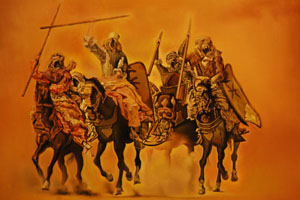
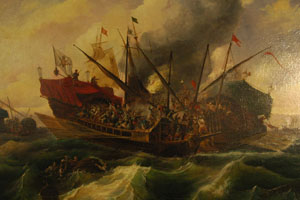
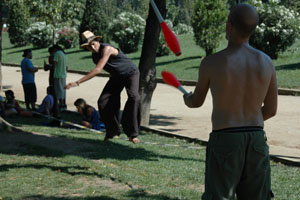
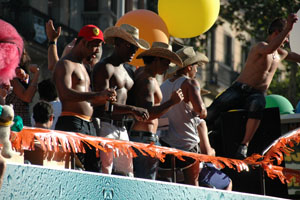
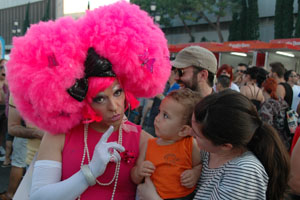
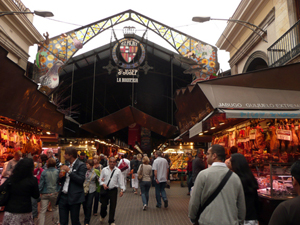
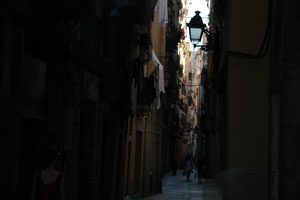
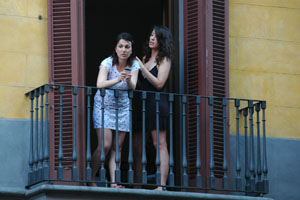

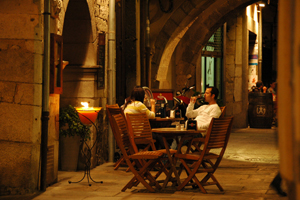
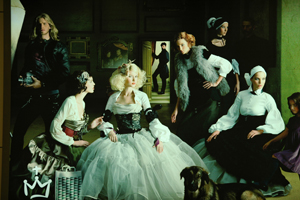
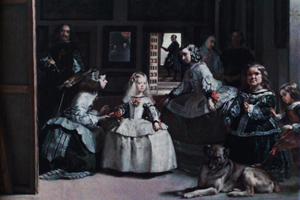
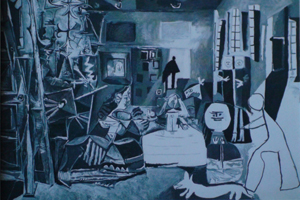
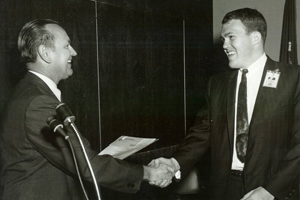




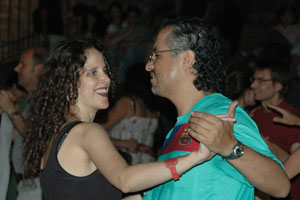
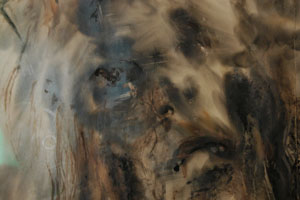

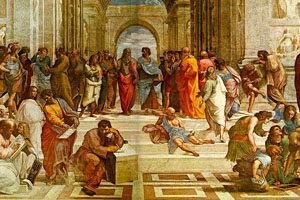



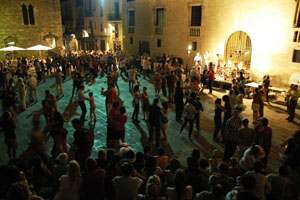


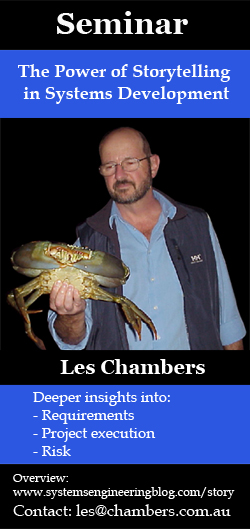

Souls in the Waves…
Superior Morning, I just stopped in to visit your internet site and imagined I would say I liked myself….
web hosting…
You have gone to a lot of work performing your homework with this article and it shows. More writers ought to consider the time for you to get their point across inside a clear and concise way. Thank you….